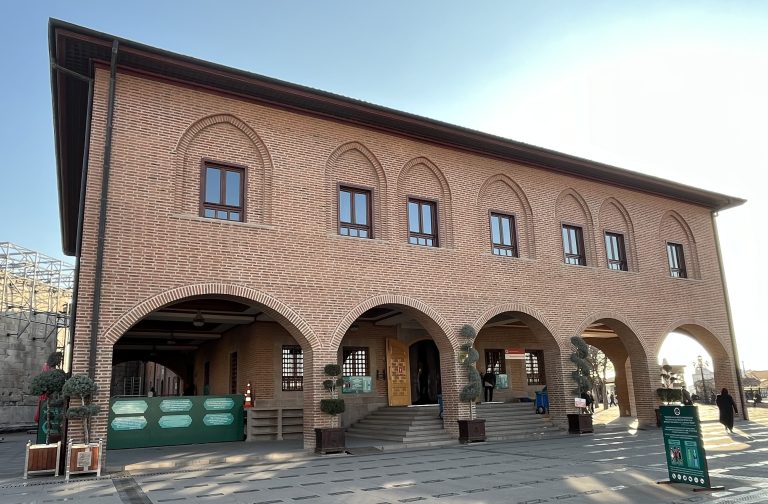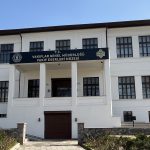Not so long ago the journalist Andrew Finkel could easily write that Ankara was a ‘citadel of Turkish nationalism’, a description that made perfect sense given that Mustafa Kemal Atatürk had specifically chosen this then insignificant Anatolian town to become the new capital of the Republic of Turkey. Today if you head south-west from the statue of Atatürk that dominates Ulus along Cumhuriyet Caddesi you will be walking past the evidence in stone of his ambition to leave the past and the pesky Ottomans behind in İstanbul. At the top of the street stands the low-slung building that housed the First Turkish Grand National Assembly. Then just a short walk further is the rather larger, rather grander Second Turkish Grand National Assembly building. Across the road stands the Ankara Palas, once a hotel to serve those working for the Assembly. They are all works of the distinctively Republican First National Architecture movement. The message was clear. Turkey was to be a modern secular republic, its new values expressed in its new secular architecture, leaving behind the mosques and medreses of the Caliphate.
But in 2024 I was in Ankara on 24 February which turned out to be Beraket Kandil. In all my quarter of a century of living in Turkey, first in Göreme and then in İstanbul, I had never known there to be much fuss about this so when I headed up towards the shrine of Hacı Bayram Veli to look at the remains of the Roman temple beside it I was not anticipating crowds. It came as a shock to arrive and find a sermon being loudly broadcast from the mosque even though it was a Saturday rather than a Friday. What’s more huge crowds of women in scarves and long macs were standing in line ready to start praying in public in a way that men but not women often do in Istanbul. A policewoman directing stragglers away from the prayer area for men put me straight. ‘It’s the kandil,’ she said simply.
On the other side of the shrine a large truck was parked up. Mobil Mutfak, it said. Mobile Kitchen. A long queue had formed and was slowing working its way towards the steps and up to the counter where each person was handed a mug of soup and a plastic packet with pieces of sticky lokma in it. Places to sit down and eat such prizes were in short supply. The atmosphere was that of iftar during Ramazan.

I’ll be frank, this came as a shock. We were within ten minutes’ walk of the Heykel, the domineering statue of Atatürk, and its clear message that the future should be secular. Yet here the old Islamic past was putting up a far stronger pushback than I had anticipated. A sign in the square informed me that the ‘garden of the mosque’ was considered ‘inside the mosque’ which meant that I should adhere to the dress code outdoors too. This apparently required long, flared trousers, a long-sleeved top and a wimple. For a man, narrow trousers and a long-sleeved cardigan-like top. No head covering, of course.
I looked round. Mine was not the only uncovered head although clearly it was in the minority. No one said anything. No one instructed me to put on a scarf. Still, I recalled the signs at the entrances to Iranian parks that had suggested just such outfits as the alternative to chadors for women. Normally I brush off all suggestions that anyone is trying to turn Turkey into Iran by pointing out the clearly different approaches to Islam of the Sunnis and Shias. Still, I felt a frisson of fear ripple through me. A battle was clearly being fought for the soul of Ankara and if this day was anything to go by it was by no means as clear as I had assumed that secularism was the guaranteed winner.
Written: 8 March 2024


